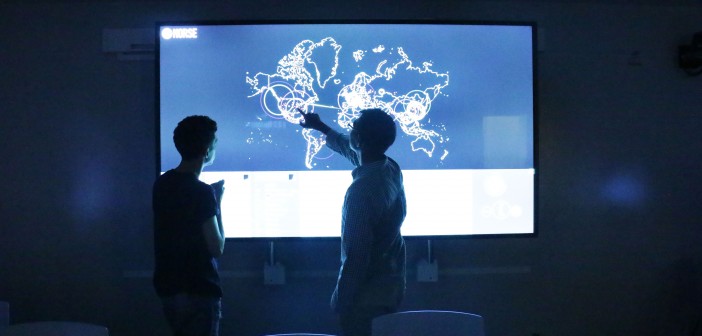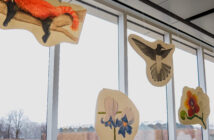Extended reality technology, the catch-all phrase used to describe augmented and virtual reality, is bridging barriers, both at Lehigh and abroad.
Steve Sakasitz, an instructional designer for the Center for Innovation in Teaching and Learning, said The Student Development Lab will be located in the basement of the Fairchild-Martindale Library Computing Center starting in Spring 2023.
The lab is intended for students interested in extended reality.
“Whether it’s building 3D worlds, doing 3D modeling or doing 360 video, if students have any interest in that kind of thing, or even just building 2D games, that would be the place to do it,” Sakasitz said.
The Student Development Lab will join the Visualization Lab, or XR Learning Lab, which is currently located in the CITL and began as the Data Visualization Lab. Along the preexisting lab’s walls is a MultiTaction Curved iWall, meant to digitally display data. VR headsets are scattered on tables throughout the space.
Sakasitz said the lab’s original purpose was for the visualization of large and expansive data. Now, it’s primarily used by Lehigh faculty for higher education XR exploration.
“We’re looking at the academic applications or applications that lean toward building empathy, or diversity or cultural stuff,” Sakasitz said.
Psychology professor Valerie Taylor uses virtual reality in her research on interracial interactions.
She said research shows people are challenged by interracial interactions, but the more people are challenged, the more positive outcomes can be.
“Interracial interactions are hard,” Taylor said. “They are difficult. They go poorly often, but if you have them, they’re supposed to lead to better outcomes because now you have experience interacting with people across different lines of difference.”
When studying these processes in survey research or in a lab, she said it is difficult to know if subjects are behaving authentically or if they are trying to meet perceived professor expectations.
She said using extended reality techniques provides a way to see how people engage in different interactions in a virtual space. If done well, it allows researchers to see people’s natural responses in a way that is not always available in the real world or in surveys.
She explained when subjects put on a VR headset, the simulated world becomes their actual reality.
“Your brain actually understands the simulated world, for a moment, as the world you’re in,” Taylor said. “It feels very, very real. We know this because if things happen, you can be startled. Your heart rate can increase. You can begin to sweat if it is scary.”
Khanjan Mehta, the vice provost for creative inquiry and director of the Mountaintop Initiative, leads the Global Social Impact Fellowship program.
The program addresses sustainable development problems in the Philippines, Kazakhstan and Sierra Leone. Because of the COVID-19 pandemic, students were unable to travel to these countries in January to conduct fieldwork, a typical component of the program.
Mehta describes this time as frustrating because the program projects were stuck and learning goals were not being met.
He said he asked himself how the program can help students develop “cognitive flexibility” so they can have context for their research and designing.
Without immersion in the environments they were studying, Mehta said students were struggling to ask the right questions.
“To solve questions that matter, you have to ask questions that matter,” Mehta said.
This led Mehta to 360-degree videos. While he was in Sierra Leone, he used a 360-degree camera to film the hotel where students would be staying, the streets of Sierra Leone and a healthcare facility there.
“If you’re working on a diagnostic device that’s going to be used in (a healthcare facility), you need to know where it is going to be used, what it looks like and what kind of education the local nurses and healthcare workers have,” Mehta said.
He said watching the videos helped students feel more comfortable before they arrived in Sierra Leone.
“It’s not very often that many of our students get to experience what it is like to be in the minority in a place in terms of the color of your skin, what you’re wearing or for a lot of different factors,” Mehta said.
At the XR Community of Practice meeting, Jeffrey Heflin, associate professor of computer science and engineering, said he likes how XR can make things more accessible.
“I do like the idea that you could do things that would be too expensive in a real-life classroom,” Heflin said.






Comment policy
Comments posted to The Brown and White website are reviewed by a moderator before being approved. Incendiary speech or harassing language, including comments targeted at individuals, may be deemed unacceptable and not published. Spam and other soliciting will also be declined.
The Brown and White also reserves the right to not publish entirely anonymous comments.